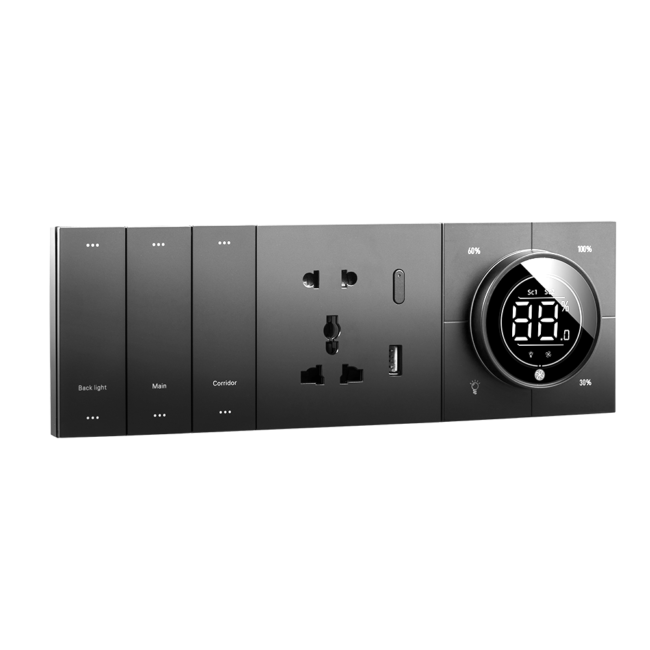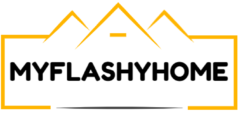
In recent years, smart home automation has become one of the most talked-about advancements in technology. People are increasingly looking for ways to make their homes more comfortable, efficient, and secure using the power of technology. One of the most essential components of smart home systems is smart switches, which allow homeowners to control their lighting and other devices with a simple voice command or through a smartphone app. Among the many options available, the NaLite smart switch is quickly becoming a popular choice. In this article, we will explore the future of smart home automation and the trends shaping the evolution of smart switch technology.
What Is Smart Home Automation?
Smart home automation refers to the use of internet-connected devices and systems that allow homeowners to control various aspects of their home environment remotely. These systems enable users to control things like lighting, heating, cooling, security cameras, door locks, and even appliances—all from the convenience of a smartphone, tablet, or voice assistant like Amazon Alexa or Google Assistant.
Smart home automation has brought a new level of convenience and control to households, allowing users to adjust settings from anywhere. For example, you could turn on the lights before you even walk into your home or adjust the temperature in your house while you’re on your way back from work. Automation can also help improve energy efficiency by turning off lights and appliances when they’re not needed.
The heart of many smart homes lies in the control systems, and one of the most common control mechanisms is the smart switch. These devices play a crucial role in modernizing a home and allowing it to interact with other smart systems and devices.
The Rise of Smart Switch Technology
Smart switches have evolved significantly in recent years. In the past, switches were just basic on/off controls for lights and appliances. Now, with smart switches, homeowners can control their devices with far more advanced functions, such as dimming, scheduling, and even voice control. This technological leap has been made possible by the rise of wireless communication technologies like Wi-Fi, Bluetooth, Zigbee, and Z-Wave.
The introduction of smart switches has revolutionized how people interact with their home environments. Instead of physically flipping a switch, you can now use your smartphone, voice commands, or automation to control the lighting and other connected devices in your home. These advancements have paved the way for more integrated and efficient home automation systems that go far beyond simple lighting control.
For example, with a smart switch like the NaLite smart switch, users can easily control their lights and other connected devices through a smartphone app. These switches can also be paired with smart home assistants to allow voice control. As smart homes continue to grow in popularity, the demand for more advanced smart switches will only continue to rise.
Trends Shaping the Future of Smart Switch Technology
As smart home automation continues to evolve, there are several key trends that are shaping the future of smart switch technology. These trends highlight the growing capabilities of smart switches and the role they will play in making homes even smarter and more efficient.
Integration with Voice Assistants
One of the biggest trends in smart switch technology is integration with voice assistants like Amazon Alexa, Google Assistant, and Apple Siri. This integration allows homeowners to control their lights and appliances with simple voice commands. For example, you can say, “Alexa, turn off the living room lights,” and the smart switch will automatically turn off the lights without you needing to lift a finger.
This trend is especially important for people with disabilities or those who have difficulty physically interacting with devices. Voice control can provide a more accessible and hands-free experience for everyone in the home. As voice technology improves, the accuracy and efficiency of voice-controlled smart switches will continue to improve as well.
The NaLite smart switch is an example of a device that is already compatible with popular voice assistants, allowing users to control their home environment with ease. This integration is expected to grow as voice assistants become even more ubiquitous in households.
Increased Energy Efficiency
Energy efficiency is another major trend in smart home technology, and smart switches are playing a key role in this shift. Smart switches can help homeowners reduce their energy consumption by enabling features like scheduling and automation. For instance, you can program your lights to turn off automatically when you’re not home, or set them to a dimmed level at certain times of the day to save electricity.
Furthermore, many smart switches come with energy monitoring features that allow users to track their electricity usage. This data can provide insights into which devices consume the most energy, allowing homeowners to make more informed decisions about their energy usage. By using smart switches that can optimize the use of lighting and other appliances, homeowners can contribute to a more sustainable future.
As more smart switches like the NaLite smart switch come equipped with energy-saving features, we can expect to see a growing focus on sustainability and energy conservation in the smart home space.
Enhanced Automation and Scheduling Features
Automation and scheduling are some of the most powerful features of smart home systems. Smart switches can be programmed to turn on and off at specific times of the day, making it easier to manage household routines. For example, you can set your lights to turn on automatically when you return home from work, or have them gradually dim as you wind down for bed.
In the future, smart switches will likely offer even more advanced automation features, such as the ability to create custom routines and schedules based on your lifestyle. For instance, a smart switch could automatically adjust the lighting in your home based on your mood, the time of day, or the weather outside. These advanced automation features will make smart homes even more intuitive and responsive to the needs of their inhabitants.
With the NaLite smart switch, users can take advantage of scheduling and automation capabilities, making it easier to create personalized routines and improve the overall comfort and convenience of their homes.
Improved Security and Safety Features
Another area where smart switches are expected to see significant advancements is in security and safety. Smart switches can already help enhance home security by allowing homeowners to simulate their presence when they are away. By scheduling lights to turn on and off at random intervals, homeowners can create the illusion that someone is home, deterring potential burglars.
In the future, smart switches will likely incorporate more advanced safety features, such as integration with smoke detectors and security systems. For example, a smart switch could automatically turn off lights or appliances if it detects a fire or gas leak, helping to prevent further damage or danger. Additionally, smart switches could be equipped with motion sensors to trigger lights when someone enters a room, providing both convenience and safety.
As the demand for smart home security solutions continues to grow, we can expect more smart switches like the NaLite smart switch to incorporate advanced security features, helping homeowners protect their homes and loved ones.
Increased Compatibility with Other Smart Devices
Another trend that will shape the future of smart switch technology is increased compatibility with other smart devices. As the number of connected devices in homes continues to rise, it’s essential that smart switches work seamlessly with other products and platforms. Whether it’s smart bulbs, thermostats, security cameras, or appliances, homeowners will want the ability to control everything from one central hub.
In the future, we can expect smart switches to offer broader compatibility with a wide range of devices, making them more versatile and convenient. Interoperability between different smart home systems will allow users to create more integrated and cohesive smart home environments, where all devices work together to enhance the overall experience.
The NaLite smart switch is designed with compatibility in mind, offering users the flexibility to connect with a wide range of smart devices and platforms. This trend towards increased compatibility will make it easier for homeowners to create fully integrated smart homes.
Touchless and Gesture Control
Touchless and gesture control are emerging as exciting possibilities in the world of smart switch technology. With advancements in sensor technology, smart switches could eventually be controlled by simple gestures or even proximity sensors. Imagine walking into a room, and the lights automatically turn on without you having to touch a switch.
Touchless control would not only provide more convenience, but it could also reduce the spread of germs and bacteria, as it eliminates the need for physical contact with switches. This is particularly relevant in today’s world, where hygiene and sanitation are more important than ever before.
As these technologies continue to improve, we can expect smart switches to become even more intuitive and user-friendly, offering a truly hands-free experience.
Aesthetic Design and Customization
While functionality is important, design is also playing a crucial role in the future of smart switches. Smart home devices need to blend seamlessly with the aesthetic of the home. In the past, traditional light switches were purely functional, often standing out as plain and uninspiring.
Today, smart switch manufacturers are focusing on design and customization, offering a range of styles, finishes, and colors that can match the decor of any room. In the future, we may even see smart switches that can be personalized with customizable faces, allowing users to change their appearance to suit their tastes.
The NaLite smart switch is a perfect example of how smart switches can combine both advanced functionality and sleek, modern design. As the demand for more visually appealing smart home products grows, we can expect future smart switches to offer even more customization options.
Conclusion
The future of smart home automation is bright, with continued advancements in smart switch technology playing a key role in the evolution of smart homes. From voice control and energy efficiency to enhanced security and touchless operation, the trends shaping smart switch technology are making homes smarter, more convenient, and more sustainable.
As products like the NaLite smart switch continue to innovate and push the boundaries of what’s possible, we can look forward to a future where our homes are more connected, intuitive, and responsive than ever before. Whether you’re looking to improve your home’s energy efficiency, enhance security, or simply enjoy the convenience of controlling your home with a voice command, smart switches are sure to be an integral part of the smart homes of tomorrow.
